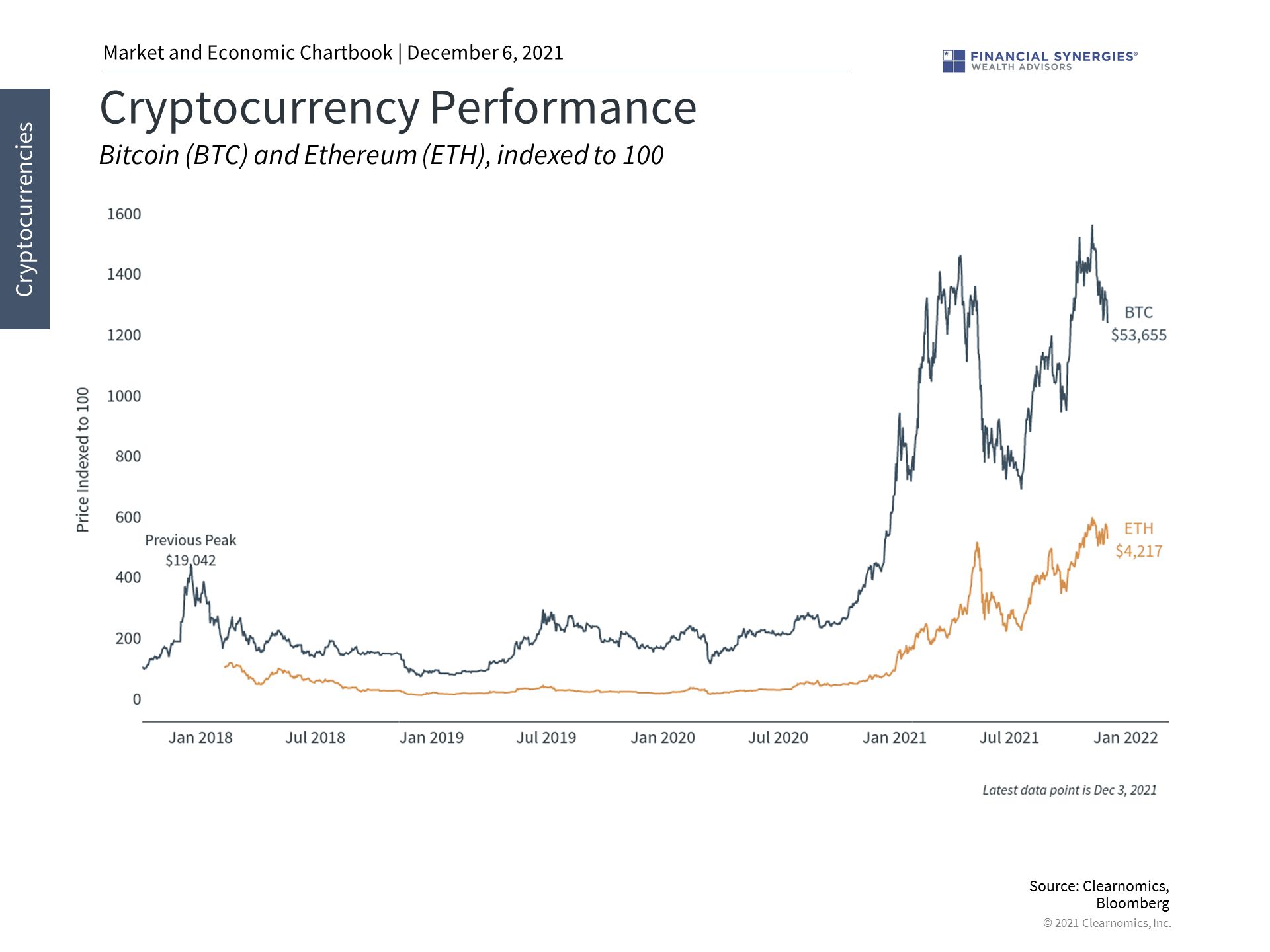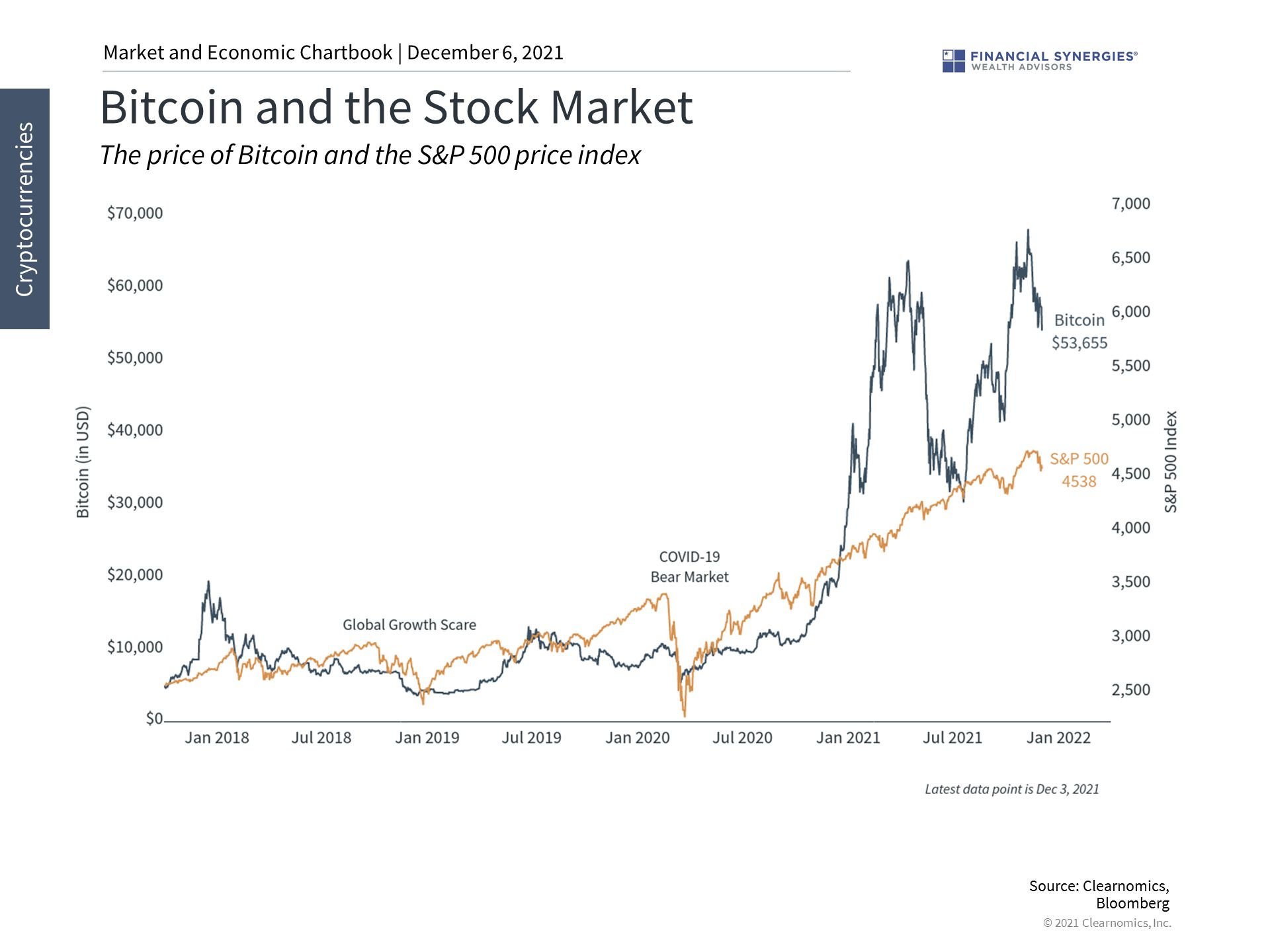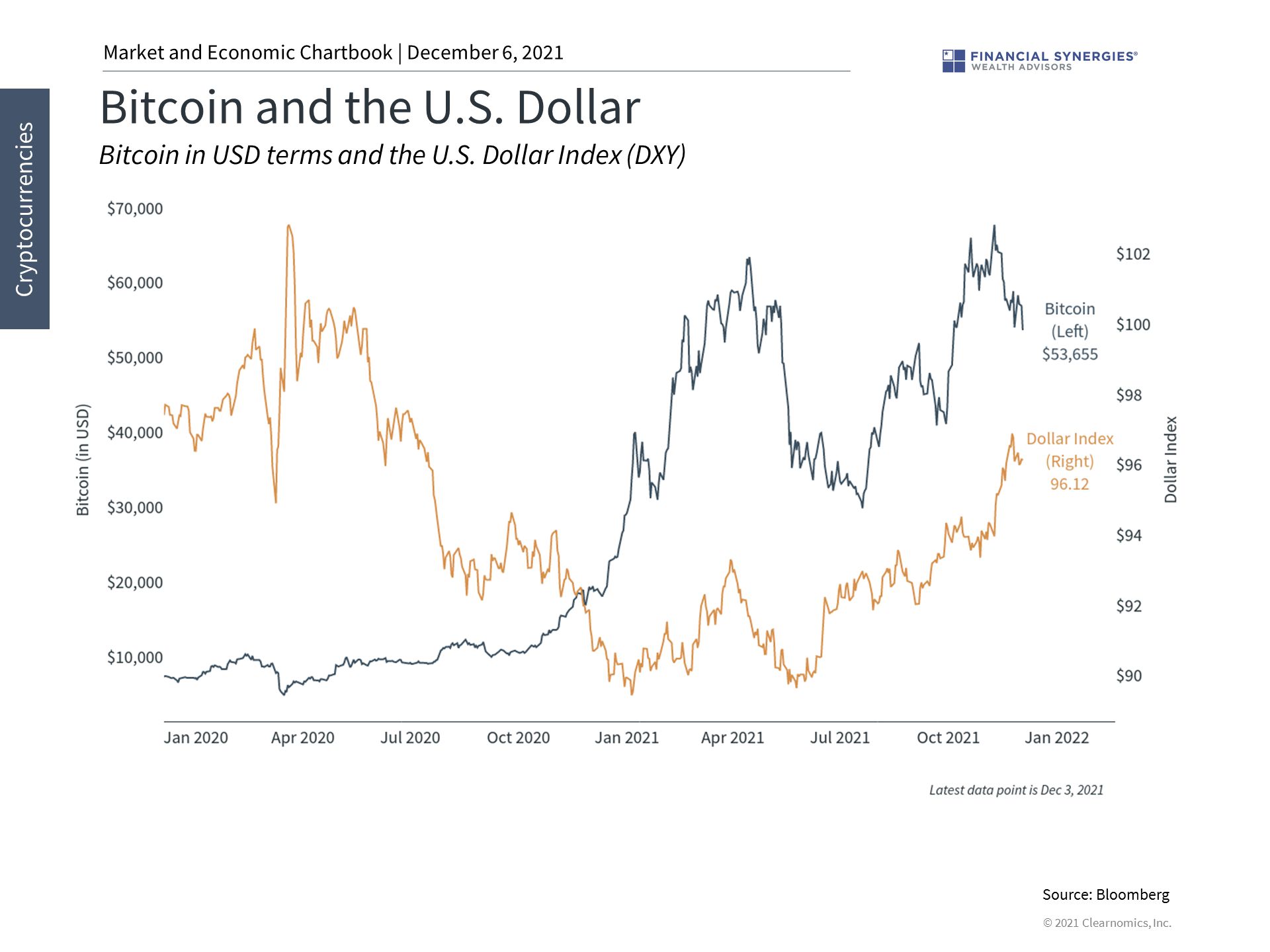There is a common saying that “we tend to overestimate the effect of technology in the short run and underestimate the effect in the long run.” This quote, often referred to as Amara’s Law, is as relevant today as it was during past technology revolutions. With growing investor enthusiasm for cryptocurrencies, blockchain, decentralized finance (DeFi) and similar advancements, long-term fundamentals are often thrown out the window in favor of short-term gains. This is amplified when popular cryptocurrencies experience sudden drops as they have recently.
The dot-com bubble of the late 1990s is the perfect example of the adage above. The popularity of tech stocks was, in hindsight, driven by the expectation of ever-rising stock prices. However, there was also the idea that the internet and software would be transformative, thereby justifying lofty valuations. This view was eventually proven to be correct, but this transition took place over decades – not days or weeks – and also not in the way that many expected. Since then, this has occurred in many other industries including biotech, energy, and more.
These lessons are widely applicable today. While speculation – i.e., trading with the goal of making short-term profits – may have some place in a portfolio, it is long-term investing that has historically created financial success. The difference, of course, is that speculation is exciting and get-rich-quick stories naturally attract attention. Investing for years and decades sounds boring but has allowed countless millions to achieve financial freedom.
Cryptocurrencies and the related topic of DeFi absolutely show promise in potentially transforming the financial services industry, but this may also be overestimated in the short run. A full discussion on the topic is complex and beyond the scope of whether it can serve a role in portfolios today. A proper explanation would involve the blockchain, smart contracts, NFTs, hashing algorithms, energy consumption, financial theories and more.
In short, trading cryptocurrencies because prices have risen is quite different from investing in its transformative potential – a distinction that parallels the 90s tech boom. Many agree that these technologies are still in their infancy and their best uses may take years to materialize. There is nothing wrong with either approach, per se, as long as it is done in a way that enhances the risk/reward of an appropriate portfolio. Even if a financial asset is speculative in nature, it can still play a role in a well-diversified portfolio.
From a disciplined investor’s standpoint – whether or not one believes decentralized finance will change the world – cryptocurrencies and related investments are simply assets with specific characteristics. The question of whether and how much to invest in these assets should be no different than deciding on any individual stock, bond, currency, commodity, investment theme or idea. This should account for not just the expected return of the investment, but more importantly its risk profile as well.
This is because recent history has shown that while these investments can rise quickly, they can plummet just as fast. In other words, they are highly volatile and introduce risk to portfolios. Fortunately, managing volatility and risk are central to portfolio construction. Investors can adjust position sizes appropriately or invest in assets that are uncorrelated.
1. Cryptocurrencies have risen but can swing wildly

Cryptocurrencies have seen a spectacular rise over the past year. However, they have also experienced wild swings that would challenge even the most patient investor.
2. Bitcoin is many times more volatile than even the S&P 500

From a portfolio perspective, cryptocurrencies like Bitcoin often move with the broader market but in an amplified way. In other words, cryptocurrencies have not acted as a hedge against stocks in recent times.
3. Bitcoin also hasn’t moved with the dollar in a simple way

Bitcoin has also not moved in a meaningfully correlated way to the U.S. dollar, despite arguments that it can act as a hedge. Only time will tell if this relationship strengthens as the cryptocurrency market matures.
Source: Clearnomics
Crypto’s Wild Ride Underscores Need for Portfolio Diversification
There is a common saying that “we tend to overestimate the effect of technology in the short run and underestimate the effect in the long run.” This quote, often referred to as Amara’s Law, is as relevant today as it was during past technology revolutions. With growing investor enthusiasm for cryptocurrencies, blockchain, decentralized finance (DeFi) and similar advancements, long-term fundamentals are often thrown out the window in favor of short-term gains. This is amplified when popular cryptocurrencies experience sudden drops as they have recently.
The dot-com bubble of the late 1990s is the perfect example of the adage above. The popularity of tech stocks was, in hindsight, driven by the expectation of ever-rising stock prices. However, there was also the idea that the internet and software would be transformative, thereby justifying lofty valuations. This view was eventually proven to be correct, but this transition took place over decades – not days or weeks – and also not in the way that many expected. Since then, this has occurred in many other industries including biotech, energy, and more.
These lessons are widely applicable today. While speculation – i.e., trading with the goal of making short-term profits – may have some place in a portfolio, it is long-term investing that has historically created financial success. The difference, of course, is that speculation is exciting and get-rich-quick stories naturally attract attention. Investing for years and decades sounds boring but has allowed countless millions to achieve financial freedom.
In short, trading cryptocurrencies because prices have risen is quite different from investing in its transformative potential – a distinction that parallels the 90s tech boom. Many agree that these technologies are still in their infancy and their best uses may take years to materialize. There is nothing wrong with either approach, per se, as long as it is done in a way that enhances the risk/reward of an appropriate portfolio. Even if a financial asset is speculative in nature, it can still play a role in a well-diversified portfolio.
From a disciplined investor’s standpoint – whether or not one believes decentralized finance will change the world – cryptocurrencies and related investments are simply assets with specific characteristics. The question of whether and how much to invest in these assets should be no different than deciding on any individual stock, bond, currency, commodity, investment theme or idea. This should account for not just the expected return of the investment, but more importantly its risk profile as well.
This is because recent history has shown that while these investments can rise quickly, they can plummet just as fast. In other words, they are highly volatile and introduce risk to portfolios. Fortunately, managing volatility and risk are central to portfolio construction. Investors can adjust position sizes appropriately or invest in assets that are uncorrelated.
1. Cryptocurrencies have risen but can swing wildly
Cryptocurrencies have seen a spectacular rise over the past year. However, they have also experienced wild swings that would challenge even the most patient investor.
2. Bitcoin is many times more volatile than even the S&P 500
From a portfolio perspective, cryptocurrencies like Bitcoin often move with the broader market but in an amplified way. In other words, cryptocurrencies have not acted as a hedge against stocks in recent times.
3. Bitcoin also hasn’t moved with the dollar in a simple way
Bitcoin has also not moved in a meaningfully correlated way to the U.S. dollar, despite arguments that it can act as a hedge. Only time will tell if this relationship strengthens as the cryptocurrency market matures.
Source: Clearnomics
Recent Posts
Weekly Market Recap | Nov. 21, 2025
Chart of the Month | S&P 500 Sets More Than 35 New Highs for Second Consecutive Year
Using Structured Notes for Enhanced Income, Protection, and Better Planning
Subscribe to Our Blog
Shareholder | Chief Investment Officer